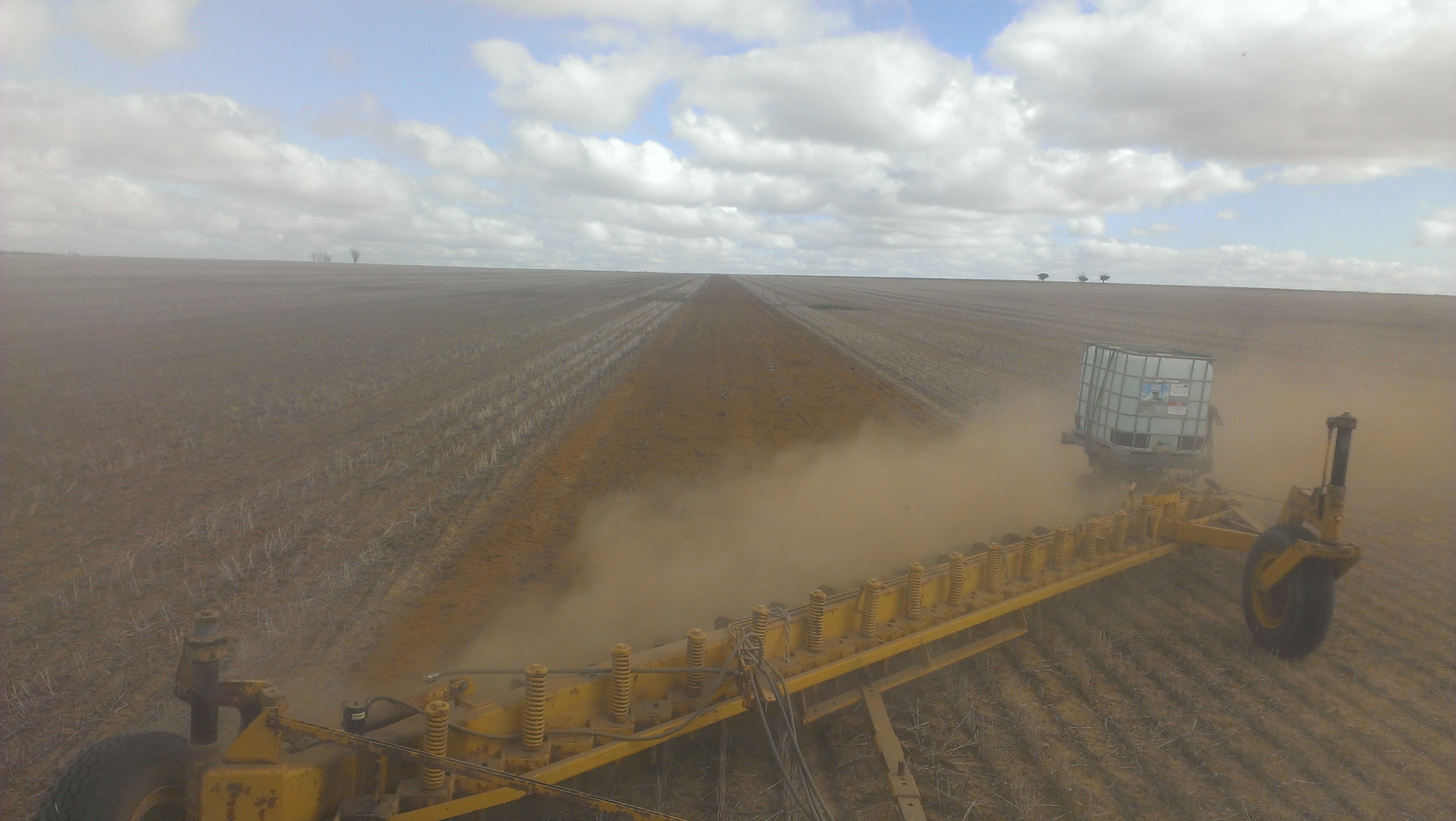Comparing Different Soil Amelioration Techniques to Improve Subsoil Acidity
Water Use Efficiency is a key driver to optimising yields and being sustainable in lower rainfall districts. Crops need to be able to access the sub-soil to make full use of the soil moisture available throughout the soil’s profile. Sub-soil constraints are possibly the greatest limiting factor to WUE.
Soil acidification is recognised as a major soil constraint that threatens productivity and natural resources throughout Western Australia’s agricultural regions. It is one of the few soil constraints that can be treated, but questions remain. What is the best incorporation method (if at all)? How long will the benefits last? Is it economical? All of these questions become key to the adoption of practices that best address soil acidification.
Soil acidification is a well-known issue to Stephen Dolton who has been applying lime to top soils on his property in Bruce Rock since the early 1990s. However, despite this many parts of the farm still has low pH levels in the subsoils (15-30cm). Since 2014, Stephen has used deep ripping, spading and ploughing to trial lime incorporation with the first year producing some interesting results.
Treatment
All treatments were triple replicated:
- 1. Nil treatment
- 2. 2T limesand pre
- 3. 2T limesand pre + one way plough
- 4. One way plough
- 5. Deep rip
- 6. 2T limesand + deep rip
- 7. 2T limesand + deep rip + one way plough.
Machines purchased/hired for use:
- 36 run Connor-Shea one way disc plough. Disc diameter 610mm, with every second disc removed.
- 15 tined Gessner ripper @450mm spacing.
Soil type at the trial site is a sandy-loam over gravel duplex, with soil depth to gravel varying from 20cm to 1m+. All plots were sampled for pH to 20-30cm. Treatments were applied in the first week of June. The trial was sown the following week to Mace wheat 65kg/ha, Aglow 45kg/ha, Flexi N 40L/ha.
First Year Results & Discussion
|
Treatment # |
Average yield |
Average GM/ha |
Average treatment costs/ha |
Average GM/ha |
|
1. Nil treatment |
1.9 |
242.37 |
0 |
242.37 |
|
2. 2T limesand pre |
1.92 |
249.03 |
85 |
164.03 |
|
3. 2T limesand pre + one way plough |
1.95 |
256.23 |
105 |
151.23 |
|
4. One way plough |
1.99 |
266.22 |
20 |
246.22 |
|
5. Deep rip |
2.07 |
288.18 |
30 |
258.18 |
|
6. 2T limesand + deep rip |
2.03 |
277.65 |
115 |
162.65 |
|
7. 2T limesand + deep rip + one way plough |
1.95 |
255.24 |
135 |
120.24 |
A gross margin for each treatment has been included in the table above. This was assuming a wheat price of $270/T and variable costs of planting at $270/ha. Treatment costs include lime at $40 per tonne landed and $5 per hectare spread. Ploughing was determined at $20 per hectare and deep ripping at $30 per hectare.
Unfortunately when the treatments were carried out in June 2015 conditions were quite dry, meaning that depth of tillage was less than ideal. Plough depth ranged from 15-30cm and the ripper was around 400cm. The plough left the seedbed a little rough before seeding the trial, which lead to establishment problems. Plants per square metre was subsequently lower, which could have had an impact on the final yield results.
From results obtained in the first year, the deep ripping plots were the clear stand out. All treatments yielded more than the nil treatments which is encouraging. Whether the increase over the three years returns a profit in some of the treatments remains to be seen.
The trial has been planted to Bonito TT canola in April 2016. Germination across the treatments is pretty even and hopefully some good results will be obtained in 2016.


